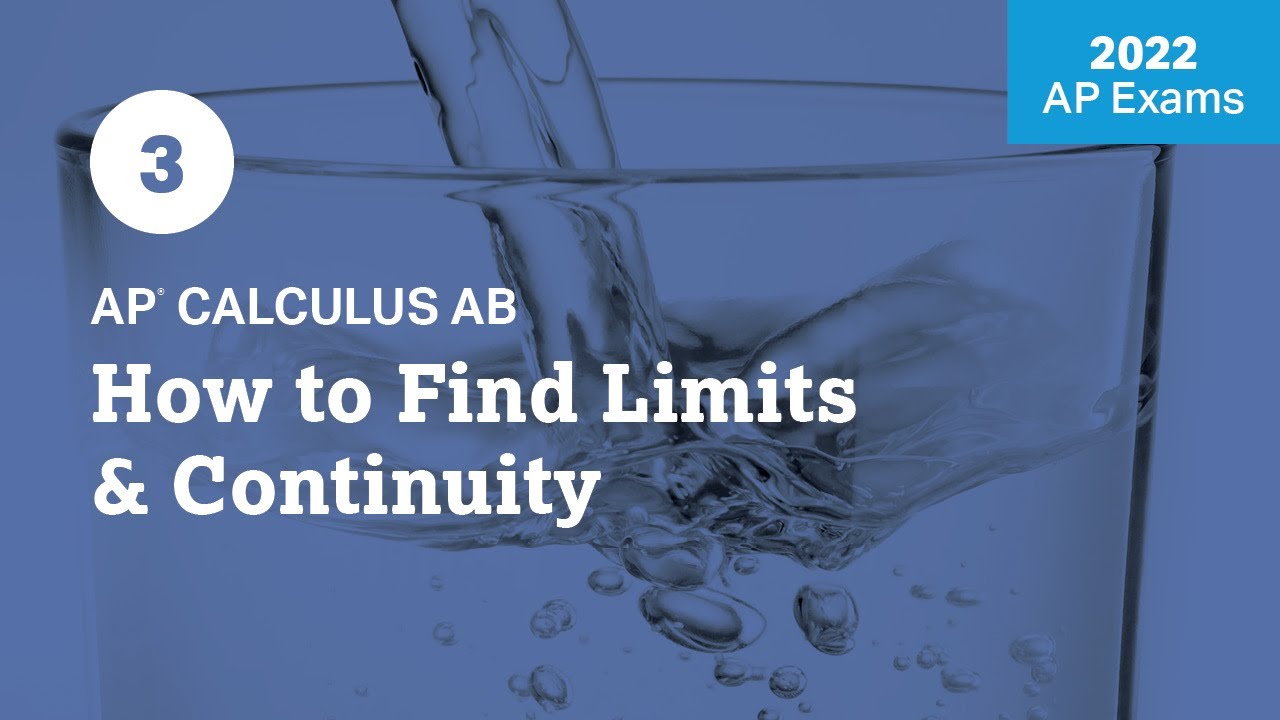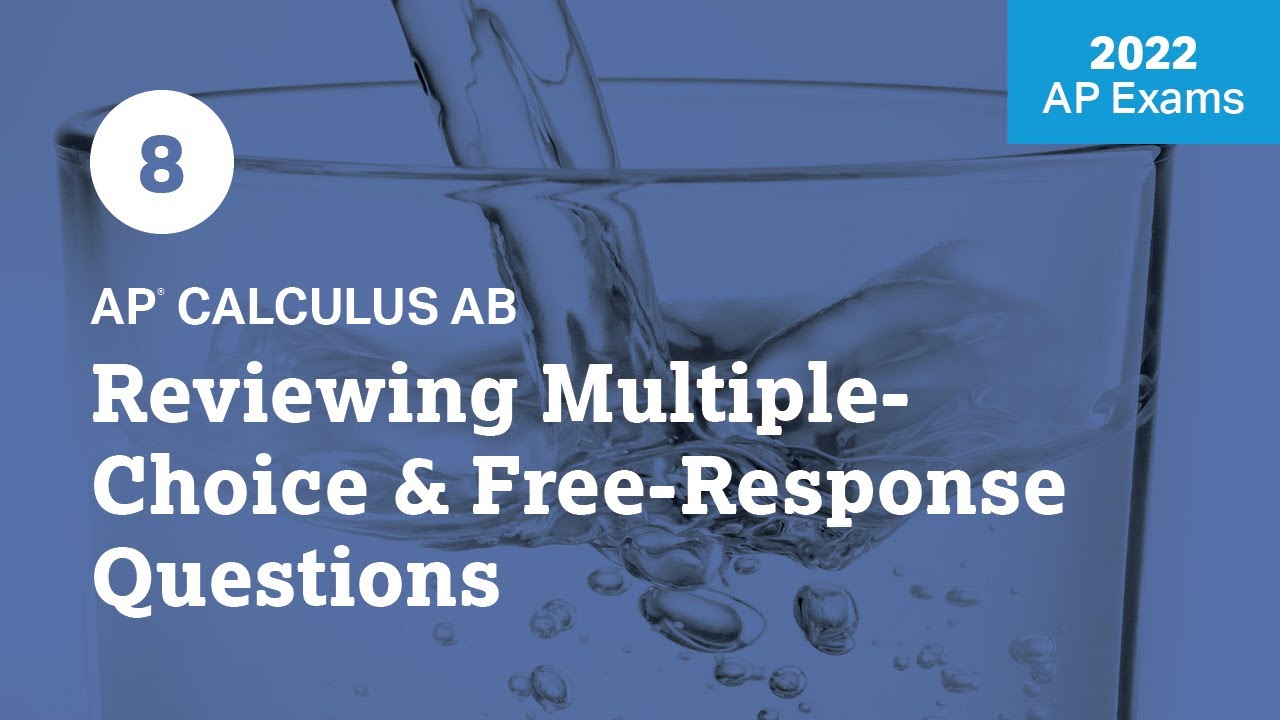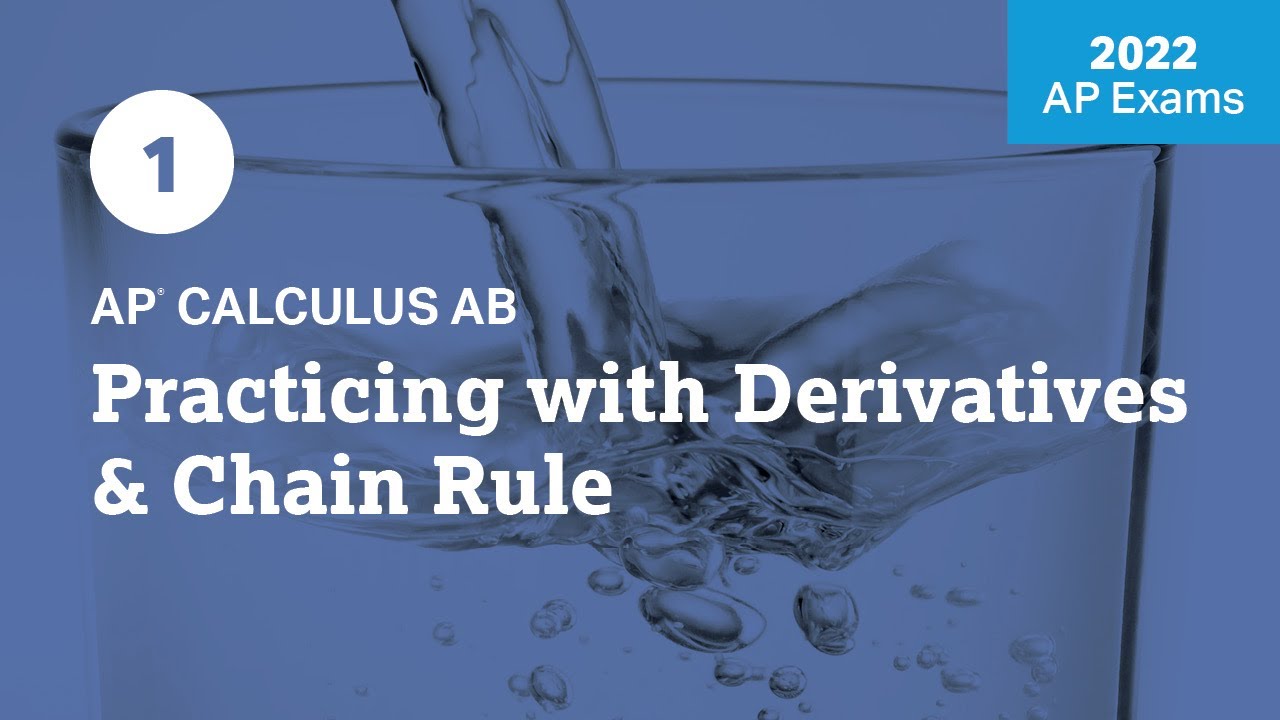2021 Live Review 3 | AP Calculus AB | How to Find Limits & Continuity
TLDRIn this engaging AP Calculus review session, the educators delve into the intricacies of limits, continuity, and the application of derivatives and integrals. They guide students through a variety of problems, emphasizing the importance of understanding the behavior of functions as they approach certain values. The session includes a detailed analysis of limits from both the left and right, the use of L'Hôpital's rule for indeterminate forms, and the application of the Fundamental Theorem of Calculus. The instructors also discuss the significance of continuity in evaluating limits and the strategies for tackling multiple-choice and free-response questions effectively. The video is peppered with humor and encouragement, aiming to motivate students to excel in their studies and make themselves proud as they approach the end of their academic journey.
Takeaways
- 📚 **Understanding Limits:** The session focuses on limits and continuity, emphasizing their importance in calculus and how they're assessed in AP exams, often in relation to derivatives and integrals.
- 🔍 **Visualizing Limits:** The importance of visual representation is highlighted, using graphs to understand where functions approach certain values and identifying points of discontinuity.
- 📉 **AP Exam Strategies:** Discussed strategies for tackling AP exam questions, such as knowing when to use formal mathematical notation and when a more streamlined approach is suitable for multiple-choice questions.
- ⏲️ **Time Management:** The instructors provided feedback on pacing, noting that some viewers requested a faster pace with less chatting and more focus on math problems.
- 🎓 **Educational Content:** The video includes a mix of educational content and light-hearted humor to maintain engagement, demonstrating a balance between serious study and a relaxed learning environment.
- 📈 **End Behavior of Functions:** The concept of end behavior in rational functions is explored, showing how the behavior as x approaches very large values (infinity) can be determined by the degrees of the polynomials involved.
- 🧮 **Multiple Choice Tactics:** Tips for approaching multiple-choice questions are given, such as directly calculating or reasoning through the answer rather than writing out full solutions.
- 🔢 **Integration and Riemann Sums:** The session briefly touches on integration, mentioning Riemann sums and how they relate to definite integrals, which is a topic to be covered in more depth in subsequent lessons.
- 📉 **Continuity and One-Sided Limits:** The concept of continuity is discussed in detail, along with how to find one-sided limits and the conditions under which a limit exists at a point.
- 📘 **Worksheets and PDF Resources:** The availability of worksheets and PDF resources for practice is mentioned, with answers provided in a Google folder for self-assessment.
- 🤓 **Study Tips:** Encouragement to practice problems even when not under exam conditions is given, emphasizing the value of repetition and review in mastering calculus concepts.
Q & A
What day of the week is it in the transcript?
-It is Wednesday.
Why did the speaker decide not to start with limits and continuity in their calculus class?
-They decided to not start with limits and continuity to allow students to take a fresh look at these concepts after learning about differentiating and integrating.
What does the speaker suggest for students who want to check their answers?
-The speaker suggests that students can check their answers on Friday in a Google folder where the answers will be posted.
What is the topic of the warm-up problem presented in the transcript?
-The warm-up problem is about finding the value or values of 'a' for which the limit as x approaches 'a' of f(x) equals four.
What is the significance of the function touching y=4 at three spots in the graph?
-The function touching y=4 at three spots indicates potential points where the limit of the function as x approaches a certain value could equal four.
Why is the speaker emphasizing the importance of approaching a limit from both the left and the right?
-The speaker emphasizes this because for a limit to exist at a certain point, it must approach the same value from both the left and the right.
What is the value of 'b' in the limit as x approaches negative infinity of the given rational function?
-The value of 'b' is -1/2, as determined by setting the limit equal to -10 and solving for 'b'.
What is the main concept the speaker is trying to convey about the function h in the transcript?
-The speaker is trying to convey that function h is continuous and decreasing for x values greater than zero, which affects how the limit as x approaches 2 of 3 times the cosine of h of x is evaluated.
What is the purpose of the joke shared by the speaker?
-The purpose of the joke is to lighten the mood and provide a moment of levity during the session.
What is the final topic the speaker mentions for the next day?
-The final topic mentioned for the next day is integration.
Why does the speaker suggest that students should not use photo math apps for question number five?
-The speaker suggests avoiding photo math apps because they may not help with learning the material and can make the problem more difficult due to the nature of the question requiring finding a missing coefficient rather than providing an answer.
What is the main takeaway from the session according to the speaker?
-The main takeaway is the importance of algebraic manipulation, understanding definitions and rules, and the significance of continuity in calculus.
Outlines
😀 Introduction and Welcome
The video begins with a greeting and an acknowledgment of the day's confusion. The host expresses excitement for the audience's participation and gives a brief overview of the day's focus on limits and continuity in calculus. The host also mentions the availability of PDFs for practice and an upcoming Q&A session.
🧐 Limits and Continuity in AP Calculus
The speaker delves into the topic of limits, particularly in the context of AP Calculus, and discusses how they are often assessed in relation to derivatives and integrals. The video includes an interactive problem-solving segment where the host and the guest work through a multiple-choice question involving the concept of limits.
📚 Worksheet Discussion and Non-Calculator Practice
The host highlights that the worksheet for the day is non-calculator allowed, emphasizing the importance of understanding the concepts without computational aids. They proceed to work through a problem involving a rational function and discuss the concept of removable discontinuities.
🤔 Limit Evaluation at Infinity
The discussion shifts to evaluating limits as a function approaches infinity. The host solves a problem that involves rational functions and horizontal asymptotes, demonstrating how to simplify expressions and apply algebraic techniques to find the limit.
📉 Continuity and Limit Approximation
The host approaches a problem involving the continuity and decreasing nature of a function. They apply the intermediate value theorem to approximate the limit of a function as it approaches a certain value, emphasizing the importance of understanding the behavior of functions.
🧮 Definite Integrals and Limit Evaluation
The video explores the connection between definite integrals and limit evaluation. The host translates a complex limit expression into an integral and solves it using the properties of integrals and the fundamental theorem of calculus.
🏁 Conclusion and Final Thoughts
The host concludes the session with a reminder about the importance of algebraic manipulation and continuity in calculus. They also tease the next day's topic, integration, and provide information about where to find solutions and additional practice material.
🎓 Motivational Closing and Special Message
The video ends with a motivational message from Jerome White, encouraging students to persevere and make themselves proud as they approach the end of their academic year. Jerome also includes a special drawing as a token of encouragement.
Mindmap
Keywords
💡Limit
💡Continuity
💡Derivative
💡Integral
💡Rational Function
💡End Behavior
💡Horizontal Asymptote
💡Removable Discontinuity
💡Intermediate Value Theorem (IVT)
💡Definite Integral
💡L'Hôpital's Rule
Highlights
The session begins with a review of limits and continuity, emphasizing their importance in calculus and their connection to derivatives and integrals.
The instructors discuss the decision to review limits and continuity after covering differentiation, allowing students to approach the topic with a fresh perspective.
A PDF with practice problems is mentioned, which is available for download through a QR code, aiming to provide students with additional practice.
The session includes a live demonstration of solving a limit problem involving a graph, showcasing the application of mathematical concepts in real-time.
The concept of removable discontinuities is explored, with an example problem illustrating how to identify and handle them in calculus.
The instructors provide a detailed walkthrough of a limit problem as x approaches negative infinity, highlighting the end behavior of functions.
A unique problem-solving approach is demonstrated where the limit is given, and the task is to find a missing coefficient in the function.
The application of the Intermediate Value Theorem in the context of limits is discussed, emphasizing its role in continuous functions.
A limit problem involving a continuous and decreasing function is solved, showcasing how to approximate limits using function behavior.
The concept of Riemann sums is introduced in the context of evaluating a limit involving an infinite series, linking it to the idea of definite integrals.
The session highlights the importance of proper notation and step-by-step problem-solving, especially for free-response questions on exams.
The instructors provide a comprehensive solution to a limit problem involving a piecewise function, emphasizing the need to consider one-sided limits.
A custom joke related to calculus is shared, aiming to lighten the mood and engage the audience in a more relaxed learning environment.
The session concludes with a free-response problem that ties together multiple concepts, including limits, integrals, and the application of l'Hôpital's rule.
The importance of algebraic manipulation and the use of calculus definitions and rules is emphasized for solving complex problems.
The session ends with a motivational message and drawing from Jerome White, encouraging students to persevere and make themselves proud.
Transcripts
Browse More Related Video

AP Calculus AB 2008 Multiple Choice (No Calculator)

2022 Live Review 3 | AP Calculus AB | How to Find Limits & Continuity

2022 Live Review 8 | AP Calculus AB | Reviewing Multiple-Choice & Free-Response Questions

8 | FRQ (No Calculator) | Practice Sessions | AP Calculus AB

2022 Live Review 1 | AP Calculus AB | Practicing with Derivatives & Chain Rule

AP Calculus BC 2003 Multiple Choice (calculator) - Questions 76 - 92
5.0 / 5 (0 votes)
Thanks for rating: